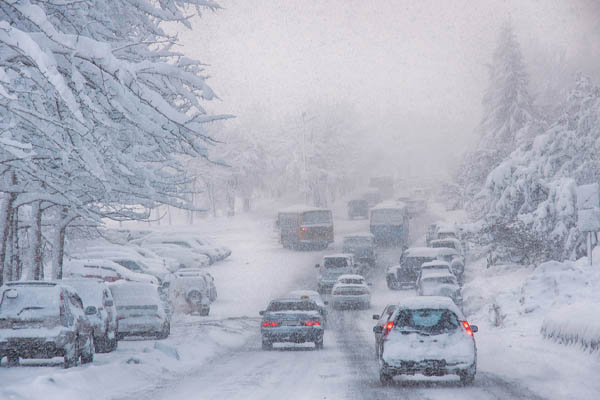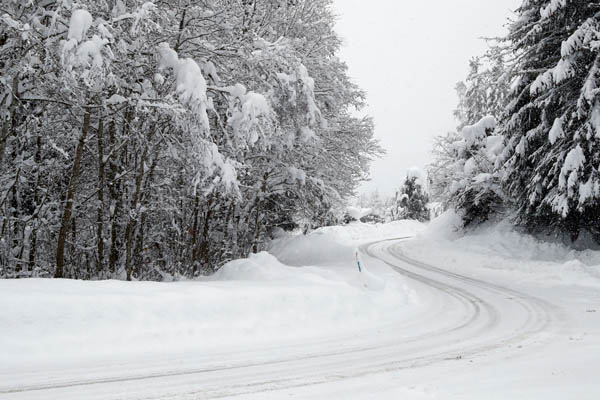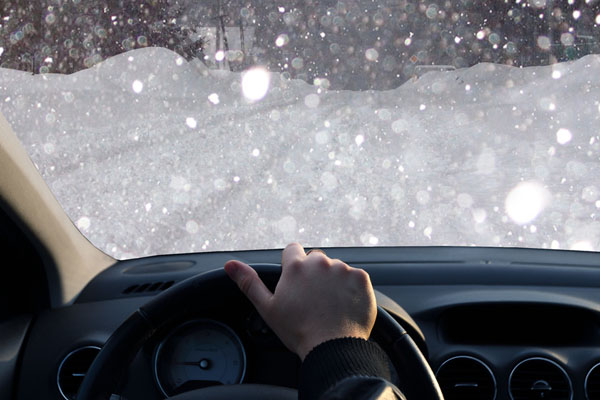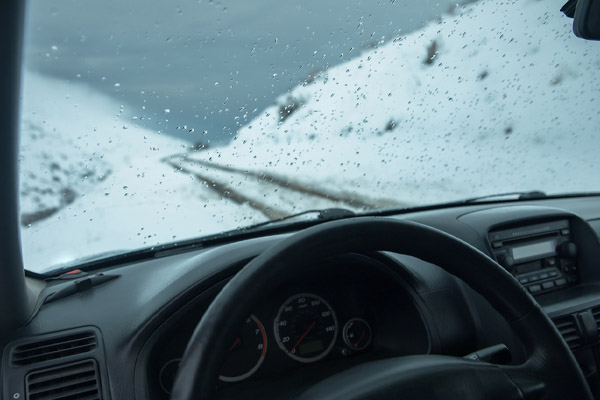When to Stay Off the Road: Recognizing Unsafe Winter Driving Conditions

Winter is a blend of sparkling snowflakes, cozy evenings, and the occasional spirited snowball fight. But this picturesque scene has a flip side: hazardous winter driving conditions. Alongside its charm, the season sees a surge in road mishaps.
The U.S. Department of Transportation estimates that icy conditions lead to over 150,000 accidents annually. Whether it’s an unexpected skid on black ice or a view obscured by a heavy snowfall, the perils of winter driving are all too real. Recognizing and respecting these dangerous conditions is paramount to ensuring safe travels during the colder months.
The Hazards of Winter Roads
Contents

Winter driving presents a unique set of challenges. As temperatures drop and snow begins to fall, roads transform into a landscape filled with potential hazards. Some of the most common ones include:
- Black ice, which is often invisible to drivers.
- Snow accumulation that can obstruct the road.
- Reduced visibility due to factors like fog, snowfall, and sleet.
But, as with most things in life, understanding these hazards is the first step to navigating them successfully.
Recognizing Dangerous Winter Driving Conditions
- Black Ice: This thin, clear ice on roads looks dark, hence its name. It’s especially deceptive on bridges, overpasses, and shaded areas. Drive cautiously if temperatures are near freezing.
- Heavy Snow: While scenic, deep snow can hide road markers and hazards, and hinder tire grip, increasing skidding risks. If there’s a heavy snow warning, rethink if traveling is necessary.
- Limited Visibility: Conditions like fog or sleet decrease visibility, reducing reaction time. Drive slower, keep headlights clear and on, and consider stopping if visibility is too low.
Effects of Temperature Fluctuations
As if winter driving wasn’t complex enough, Mother Nature likes to add temperature fluctuations to the mix. Ever noticed how roads can switch from being clear to icy in a matter of hours, or even minutes? That’s due to fluctuating temperatures. When snow or rain encounters a surface that’s at or below freezing, it can instantly turn into ice.
Moreover, as the day warms up, what was once a snowy road can become a slushy mess, only to refreeze into ice patches as temperatures drop again at night. This thawing and refreezing process can make driving conditions unpredictable and demands extra attention from drivers.
Infrastructure Challenges
- Untreated Roads: Without salt or sand, roads can stay icy and slippery. Approach unknown roads with caution.
- Mountain Roads: Winter conditions worsen at higher altitudes with faster freezing. Steep, icy inclines add risk. Ensure you’re prepared before navigating these areas.
Assessing Vehicle Preparedness

Winter doesn’t just challenge drivers; it challenges our vehicles too. Here’s how you can ensure your car is up to the task:
- Auto Glass: Auto glass plays a vital role in driving safety, especially in harsh winter conditions. It provides crucial visibility, shielding drivers from snow, ice, and freezing winds, while also serving as an integral part of the vehicle’s structural integrity. Properly maintained auto glass is essential for clear sight lines and protection against the challenging elements of winter driving.
- Winter Tires: These aren’t just regular tires with a fancy name. Winter tires are designed with a special rubber compound that remains flexible in cold temperatures, offering better grip and improved braking on icy roads.
- Braking Systems: In snowy conditions, it’s not just about how fast you can go, but more importantly, how safely you can stop. Familiarize yourself with your vehicle’s braking system, whether it’s anti-lock brakes or traditional brakes, and practice safe braking techniques for winter roads.
- Vehicle Weight and Traction Control: A heavier vehicle can often mean better traction, but it can also mean longer stopping distances. Always be aware of your vehicle’s traction capabilities and adjust your driving speed and style accordingly.
External Factors to Consider
Winter roads are tricky enough on their own, but sometimes, it’s the external factors that amplify the challenges:
- Time of Day: Winter nights bring reduced visibility and heightened ice formation risks due to colder temperatures.
- Traffic Density: Heavy traffic on snowy roads increases accident risks, especially if drivers aren’t cautious of conditions.
- Weather Reports: Utilize real-time updates to be informed about road conditions and potential dangers before driving.
Precautions if You Must Drive
Sometimes, despite our best judgments, we find ourselves having to brave the winter roads. If you must drive:
- Reduced Speeds: This isn’t the time to test your car’s top speed. Slower speeds give you more time to react and a better chance to stop when needed.
- Increased Following Distance: On icy roads, stopping distances can be significantly longer. Increase the distance between you and the car in front to provide a safety buffer.
- Headlights and Signals: Ensure your headlights are on and clear of snow or grime, even during the day. Use signals diligently to communicate your intentions to other drivers.
- Losing Control: Should you ever feel your vehicle starting to skid, remain calm. Steer in the direction you want to go, and avoid slamming on the brakes, which can exacerbate the skid.
Trusting Your Instincts
When it comes to winter driving, sometimes the best navigation tool isn’t a GPS or weather app—it’s your intuition. Amid the unpredictability of icy roads and blinding snowfalls, your gut feeling can often be a reliable barometer of safety. Before heading out:
- Listen to Your Intuition: If something feels off or you’re uncertain about the driving conditions, take a moment to pause.
- Assess the Necessity: Always evaluate the urgency of your trip. Ask yourself, is this journey truly urgent, or can it wait?
- Weigh the Risks: Balance the importance of your journey against the potential dangers of the road.
Remember, no appointment or commitment is worth jeopardizing your safety or that of others. In moments of doubt, trusting your instincts might be the difference between a routine drive and a hazardous ordeal.
The Role of Auto Glass in Winter Driving

As you navigate the frost-kissed roads this winter, one of your vehicle’s most vital components for safety and comfort is the auto glass. Let’s dive into understanding its pivotal role:
- Visibility and Windshield Clarity: A clear windshield is your window to the world while driving. But winter, with its frosty mornings and snowy evenings, can severely compromise this clarity. Ice and snow accumulation, coupled with salt spray and road grime, can obscure vision and make driving perilous. Regularly cleaning your windshield and using quality windshield washer fluid can be lifesavers in maintaining visibility.
- Integrity of Auto Glass in Cold Temperatures: Winter’s fluctuating temperatures can be harsh on your auto glass, especially if there are existing chips or cracks. These imperfections can expand in the cold, posing risks of shattering. It’s essential to address any damage promptly before winter’s chill sets in.
- Defrosting and De-icing Without Damaging Auto Glass: We’ve all been there—waking up to a windshield coated in a thick layer of ice. However, avoid shortcuts like pouring hot water, which can cause the glass to crack due to sudden temperature changes. Instead, opt for commercial de-icers or a mixture of water and isopropyl alcohol. Always use a plastic scraper and be gentle to prevent scratching.
- Wiper Blade Maintenance: Your wipers play a pivotal role in clearing away winter’s slush and sleet. Investing in winter-specific wiper blades can make a difference, as they’re designed to combat ice buildup. Regularly inspect them for wear and replace if needed.
- Window Fogging and Proper Ventilation: There’s nothing more frustrating than the interior of your windows fogging up, reducing visibility. This condensation occurs when the warm air inside the car meets the cold windows. Ensure vents are aimed at the windows and consider using the air conditioner (with the temperature set to warm) to remove humidity. Keeping side windows and mirrors clear is equally crucial for safe lane changes and turns.
Remember, while winter might pose its set of challenges, with the right care and attention to your auto glass, you can ensure safer and more comfortable journeys throughout the season.
Conclusion
Winter’s beauty, with its snowy landscapes and icy allure, comes hand in hand with unpredictable driving challenges, even for experienced drivers. As we navigate slippery roads and potential hazards, it’s essential to prioritize safety for ourselves and others. Should winter’s unpredictability affect your auto glass, Liberty Autoglass stands ready. We’re dedicated to ensuring clear visibility and preserving your vehicle’s glass integrity during the frosty months. Trust in Liberty Autoglass to keep you driving safely through winter’s trials. Here’s to a season of cautious driving and swift resolutions!
For Superior Auto Glass Services, Call Liberty AutoGlass

Liberty AutoGlass offers auto glass repair using the highest quality materials and the most advanced auto glass technology to repair your auto glass correctly and quickly. We offer mobile services so we can repair your damaged auto glass at the convenience of your home or office. This means that we come to wherever your vehicle is parked, and you can go about your day as you would normally. We fix windshields, back glass, door glass, vent glass, and quarter glass. We also can handle your insurance claim from start to finish, making the process easier for you! Call Liberty AutoGlass today to find out more!
Contact us today or give us a call at (610) 377-7787 or (877) 90-GLASS if you have any questions. Click here to view our complete mobile auto glass service area in Pennsylvania.

Related Articles: